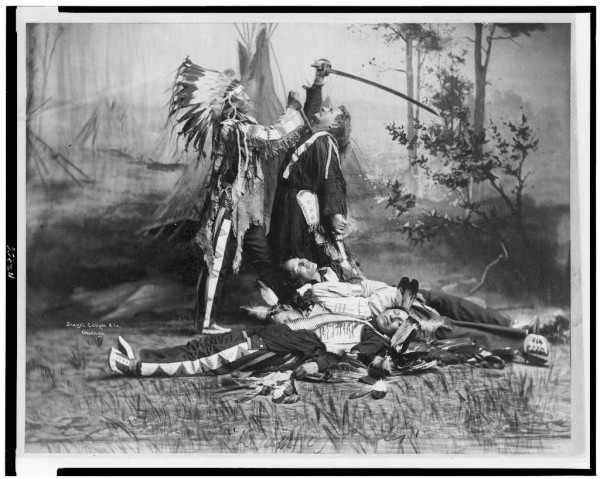Who was billed as the killer of custer in buffalo bill s wild west show sitting bull

Who was billed as the “Killer of Custer” in Buffalo Bill’s Wild West Show? Sitting Bull.

Sitting Bull, the famous Lakota Sioux chief, played a prominent role in Buffalo Bill’s Wild West Show during the late 19th century. Born in present-day South Dakota in 1831, Sitting Bull rose to prominence as a warrior and became one of the most influential Native American leaders of his time. He is renowned for his role in the Battle of Little Bighorn, where he fought against the forces led by General George Armstrong Custer, who subsequently perished in the conflict.
The Battle of Little Bighorn, which took place on June 25, 1876, was a significant event in the history of the American West. Sitting Bull and his allied tribes, including the Cheyenne and Arapaho, successfully defeated Custer’s Seventh Cavalry Regiment, leaving no survivors among Custer’s troops. This triumph became a symbol of Native American resistance against the encroachment of the United States government and its expansionist policies.

Buffalo Bill Cody, the renowned showman and hunter, recognized the dramatic appeal of Sitting Bull’s story and invited him to join his Wild West Show in the 1880s. Sitting Bull’s participation in the show was a significant draw for audiences, as they were captivated by the opportunity to witness the person who had been labeled the “Killer of Custer” firsthand.
During his time with the Wild West Show, Sitting Bull shared his experiences and provided audiences with a glimpse into Native American culture, history, and the struggles faced by indigenous peoples amidst the changing dynamics of the American frontier. His presence added an air of authenticity to the performances, as he was celebrated not only as a fierce warrior but also as a symbol of resistance and resilience.
Sitting Bull’s involvement in Buffalo Bill’s Wild West Show allowed him to reach a broader audience and dispel many of the misconceptions surrounding Native Americans prevalent at the time. His presence challenged stereotypes and gave people a chance to see Native Americans not as hostile adversaries but as complex individuals with their own rich cultural heritage.
Throughout his performances, Sitting Bull remained a symbol of strength and pride, embodying the spirit of the Lakota Sioux people. His participation in the Wild West Show helped humanize the Native American experience for audiences and fostered a greater understanding and appreciation of their heritage and struggles.
Even though Sitting Bull’s time with Buffalo Bill’s Wild West Show was relatively brief, his impact on shaping public perceptions of Native Americans was significant. His legacy as the “Killer of Custer” and his participation in the show helped perpetuate his reputation as a prominent historical figure. Today, Sitting Bull is remembered not only for his military achievements but also for his role in shaping the narrative of the American West and the indigenous peoples who called it home.
Source: Wikipedia - Sitting Bull
Tags
Share
Related Posts
Quick Links
Legal Stuff

